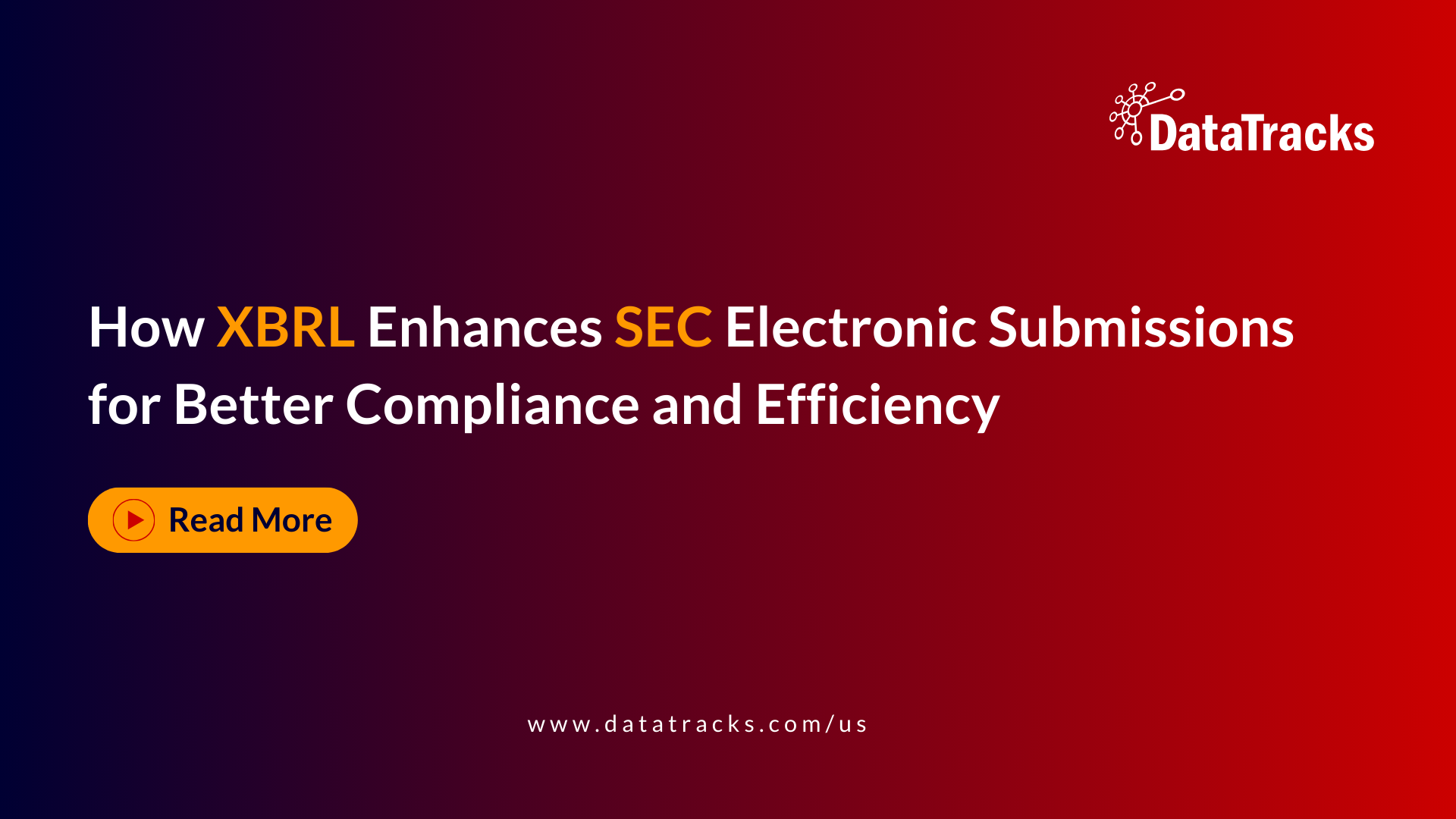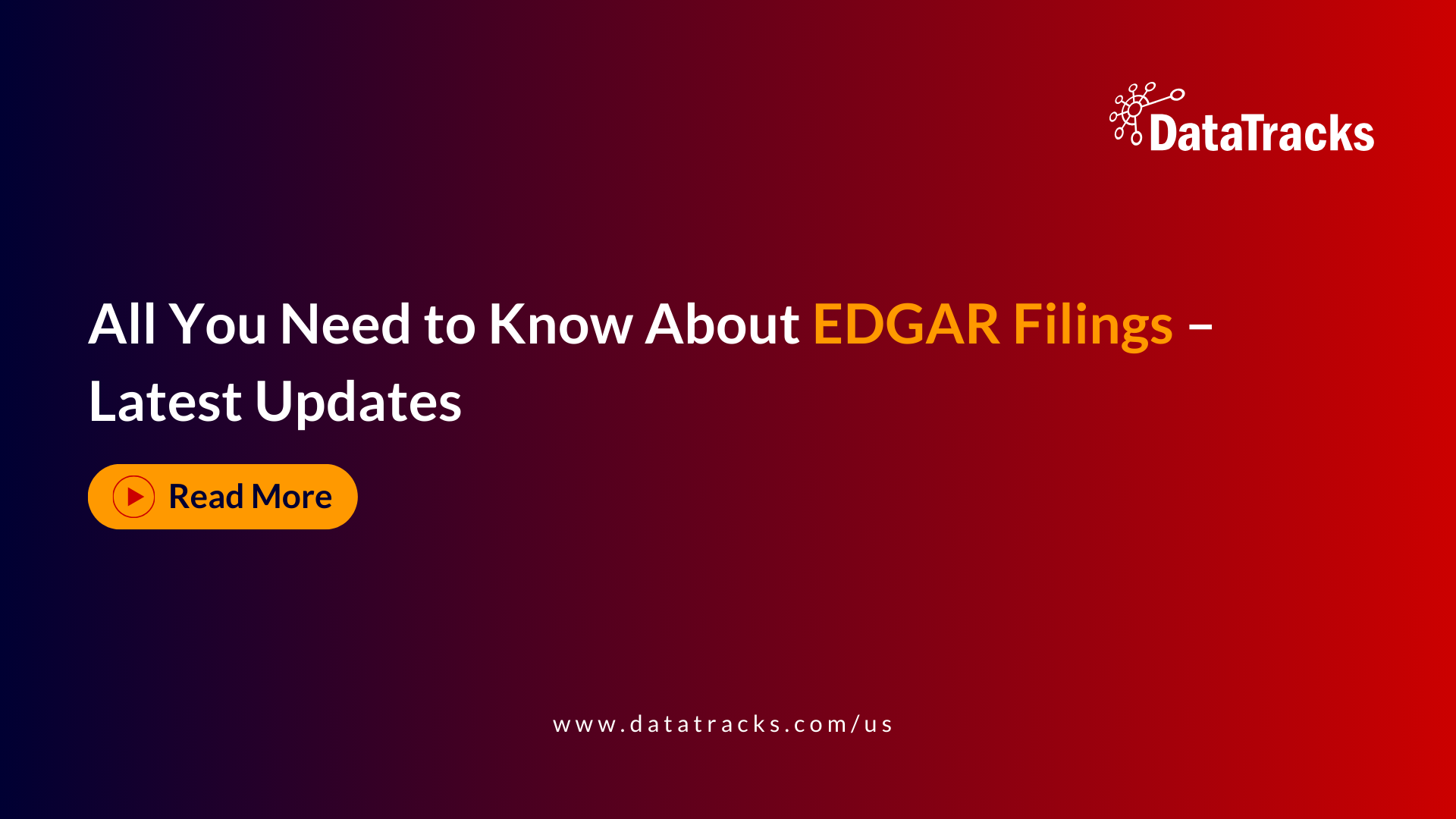How to Extract, See and Use XBRL Data
The XBRL data has been available for some years now, such as the FFIEC in the US has XBRL data for more than a decade, the SEC has data for large accelerated filers and data for all other companies within its purview. And here is the true test of XBRL. The ultimate fate of all data is to be distilled into information, and then into intelligent insights. The funnel is quite simple really and is one that we’ve all seen very often.
Before we begin extracting XBRL data, let’s first understand how to extract values from financial statements and explore the usefulness of XBRL in this process.
How to Extract Values from Financial Statements Documents
Extracting values from financial statements is a critical task for maintaining accuracy and compliance in SEC reporting.
The SEC mandates that publicly traded companies file comprehensive financial statements, such as Forms 10-K, 10-Q, and 8-K, which must adhere to specific regulatory requirements. These filings provide transparency and ensure that stakeholders, including investors, regulators, and analysts, have access to accurate financial information. The extraction of values from these financial statements is essential for various analyses, audits, and further reporting.
Steps for Extracting Values from Financial Statements
Identify Relevant Sections
- Balance Sheet: Extract values for assets, liabilities, and shareholders’ equity.
- Income Statement: Extract values for revenues, expenses, net income, and earnings per share.
- Cash Flow Statement: Extract values for operating activities, investing activities, and financing activities.
Use Standardized Formats and Tags
- XBRL Tagging: Financial statements filed with the SEC often use XBRL (eXtensible Business Reporting Language) tags, which standardize the reporting format and make data extraction more efficient. Each financial item is tagged with a unique identifier, facilitating automated data extraction.
- Inline XBRL (iXBRL): This format combines XBRL tags with human-readable HTML, making it easier to extract data while reviewing the document visually.
Leverage Automation Tools
- Financial Reporting Software: Tools like DataTracks Rainbow can automate the extraction of values from financial statements. These tools use advanced algorithms to identify and extract tagged financial data accurately.
- Data Extraction Tools: Use specialized data extraction tools that can read XBRL and iXBRL files, automatically pulling values and organizing them into a structured format for analysis and reporting.
Manual Review and Verification
- Cross-Verification: After extracting values, cross-verify them with the original financial statements to ensure accuracy.
- Validation Rules: Apply validation rules to check for consistency and accuracy, such as comparing extracted values with historical data and industry benchmarks.
Reporting and Analysis
- Data Integration: Integrate the extracted values into your financial reporting system or database for further analysis.
- Stakeholder Reporting: Use the extracted and verified data to prepare reports for stakeholders, ensuring compliance with SEC requirements.
Benefits of Accurate Value Extraction
- Regulatory Compliance: Ensures that all filings meet SEC standards and reduce the risk of regulatory scrutiny and penalties.
- Data Accuracy: Enhances the accuracy of financial reports, providing reliable information for decision-making.
- Efficiency: Streamlines the reporting process, saving time and reducing the workload for financial teams.
- Transparency: Improves transparency and trust with stakeholders by providing clear and accurate financial information.
Extracting values from financial statements documents is a crucial step in SEC reporting. By using standardized formats like XBRL, leveraging automation tools, and ensuring rigorous manual verification, companies can maintain high standards of accuracy and compliance. This process not only meets regulatory requirements but also supports effective financial management and stakeholder communication.
XBRL data is not very tough to extract. It is available from websites belonging to regulators (when this data is public, of course). It only requires a plug-in that can read the XBRL data and fill up a standardized presentation format, using that data. The trouble, though, comes next in the form of two challenges – Data Analytics and Data Visualization.
Data Analytics
The sheer vastness of data makes it difficult to rely completely on a particular analysis tool for arriving at a decision. XBRL aids in fundamental analysis by capturing the focal points for decision making and helps in comparing different parameters for inferential analysis. Using XBRL data, fundamental analysis of companies becomes very easy as XBRL lends some degree of comparability to the fundamentals of a number of businesses (in spite of high extension rates).
This should be effective at least for the XBRL data pertaining to the primary financial statements like the Balance Sheet, Income, Cash Flow and Equity statements. An analyst may need some categorization of data based on some filtering criteria. So for an analysis package, it is essential to do a thorough use-case analysis to ensure that useful data analysis can be performed.
Another question that arises is, “Do you restrict the input to only quantitative data, or do you want to use text block items for some qualitative analysis also?” A related query here is, “Do you use other sources of data at all, such as HTML submissions where available (like for the SEC) and RSS news feeds?” These are deep questions, because the answer could change the way the world looks at the usefulness of XBRL data.
Data Visualization
Data Visualization lends us the inferential ability to make sense of the analysis. It helps us dig deep into complex models and arms us with graphical representations making interpretations easy. Humans are visual creatures. We love visual representations because we process them faster (or we think we process them faster). However, data visualization is much more fraught with danger than taking a photograph or other visible creations. This is primarily due to the difficulty of finding the perfect balance between aesthetics and effectiveness. These two problems are compounded by the variability of effectiveness and aesthetics from person to person.
As far as aesthetics are concerned, some visualization does look unquestionably beautiful, while others do not. For example, a bump chart with color gradations may look much more beautiful than a bump chart with thin lines joining data points, but do the color gradations bring any extra information? Is the heavier load on the graphics worth it?
XBRL data is available. How we use it will depend on both regulators making comparability a factor in deciding XBRL quality, and on the tools that the XBRL ecosystem develops. Only when we have a thriving environment of XBRL data use, can we confidently say that XBRL is an effective data standard.
Get in touch with an XBRL expert to understand how we can simplify SEC reporting for your organization.
Here the slideshare link to learn more about How to Extract, See and Use XBRL data
FAQs
How do I extract values from XBRL-tagged financial statements?
To extract values from XBRL-tagged financial statements, you can use financial reporting software or specialized data extraction tools. These tools leverage advanced algorithms to read XBRL and iXBRL files, automatically pulling and organizing the tagged financial data into a structured format for analysis and reporting.
What tools can I use to view XBRL data?
You can use online XBRL viewers, such as the SEC’s EDGAR system, or desktop XBRL viewer applications to visualize XBRL data. These tools allow you to explore financial information interactively and provide both machine-readable and human-readable formats, especially when using Inline XBRL (iXBRL).
How can I ensure the accuracy of extracted XBRL data?
To ensure the accuracy of extracted XBRL data, perform cross-verification with the original financial statements and apply validation rules. This involves checking for consistency and accuracy by comparing the extracted values with historical data, industry benchmarks, and other relevant metrics. Leveraging automated validation features in financial reporting software can also help maintain data integrity.




